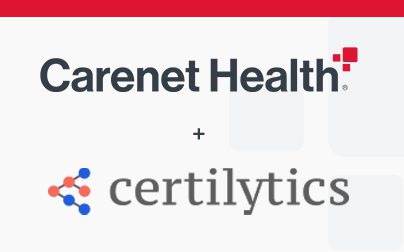Today’s consumers want healthcare organizations to provide the same anywhere, anytime interactive experiences they’ve become accustomed to in other areas of their lives. That means care delivered in a convenient location (which may be the grocery store down the street or their own couch via smartphone) at a convenient time (which means every day, all day). It also means cost-effective options explained in language they can understand. Most importantly, they want to be cared for—as a whole person—by a healthcare system that respects their needs and preferences.
That’s why health plans and their partners must find ways to provide more personalized services, more efficient experiences and deeper insights. Fortunately, with the right dose of technological intervention and human interaction, healthcare can continue to refine the consumer experience.
At Carenet Health, we have front-row seats (and often assume a head coaching role) to see and test the changes needed in healthcare consumer engagement. Following are the three elements we believe can deliver a higher level of access, efficiency and value—without sacrificing quality.
01 On-demand access to a multidisciplinary health advocacy team
Despite consumers’ propensity to search for health information online (80% do, according to the Pew Research Center), nearly 9 out of 10 adults still have difficulty understanding routine health informationand 86% don’t understand concepts such as deductible and coinsurance. The fact is, most people are in the dark when it comes to the detailed language and navigation of the healthcare system.
Successful health plans (and employers) are beginning to provide always-accessible advocates to empower consumers to take action with confidence.
Here’s what that can look like: Each member has one-point access to a highly skilled, personal guide. That guide becomes a trusted and invaluable resource for consumers to get help with everything from provider selection and treatment cost estimates to appointment coordination and wellness plan enrollment. The key to making this work, though, lies in ensuring that those personal guides are well trained, have advanced communication skills and have experience working with your specific populations, such as seniors, non-English speakers, diabetic patients and even millennials.
Streamlined, personal and on-demand availability applies to clinical care, too, and should include access to a registered nurse who can assess symptoms, recommend treatment and provide care management information. When appropriate, the nurse should be able to transfer consumers to virtual physicians, as well. It’s telehealth, yes, but better coordinated and easier to use.
02 Advanced CRM technology for insights and visibility
Healthcare organizations have long been accumulating massive amounts of data from multiple, disparate sources. But what good is all that data if you can’t reveal the opportunities it holds? Deploying next-generation CRM interoperability is the key that unlocks the data integration and enhancement necessary to act on patient and health plan member insights. We’ve seen intuitive and connective technology drive benefits like:
- Supporting an engagement experience with contextually relevant, tailored information and even a comprehensive family view based on medical and pharmacy claims data, health risk assessment information and more
- Tracking all multichannel activities and outcomes to ensure needed visibility across all touchpoints and a cohesive, coordinated approach to care and engagement
- Empowering business imperatives such as managing population health, elevating care and outcomes, reducing risk and driving efficiencies
03 Personalization interventions to drive engagement
Using data to inform strategies and drive change at the organizational level is good. Using this information to develop personalized and relevant intervention strategies is even better. Technology and analytics need to be used to proactively identify high-risk/high-cost individuals with the greatest opportunity for impact, intervention and influence. We’ve seen that list include members with susceptibilities for:
- Preventable admissions
- Readmissions
- Frequent and inappropriate ER/UCC usage
- Gaps in care
- Pharmacy-related risks and opportunities
- Out-of-network use
Personalized, proactive outreach is an effective motivator, but inbound experiences should be personalized, as well. After all, consumers shouldn’t have to explain who they are, what happened during their last doctor’s visit or even why they’re calling in some cases. Empowering engagement teams with a comprehensive view of each member provides them with the insights and information to give consumers exactly the information they need, in exactly the way they want to receive it, before they even know it’s needed.
The new norm
Today’s tech-tethered consumers live in an on-demand universe fueled by ease and speed, where just about everything is conveniently accessible at any time with a simple click or swipe. Consumers are beginning to expect a different health plan experience, with support and care provided 24/7/365. The good news is the industry already has the building blocks needed.
We’re here to help
Using our proprietary Intelligent Engagement™ model, Carenet Health can help you combine the best of human connections, data, technology and clinical capital to develop solutions that deliver results. Contact us to learn more.



